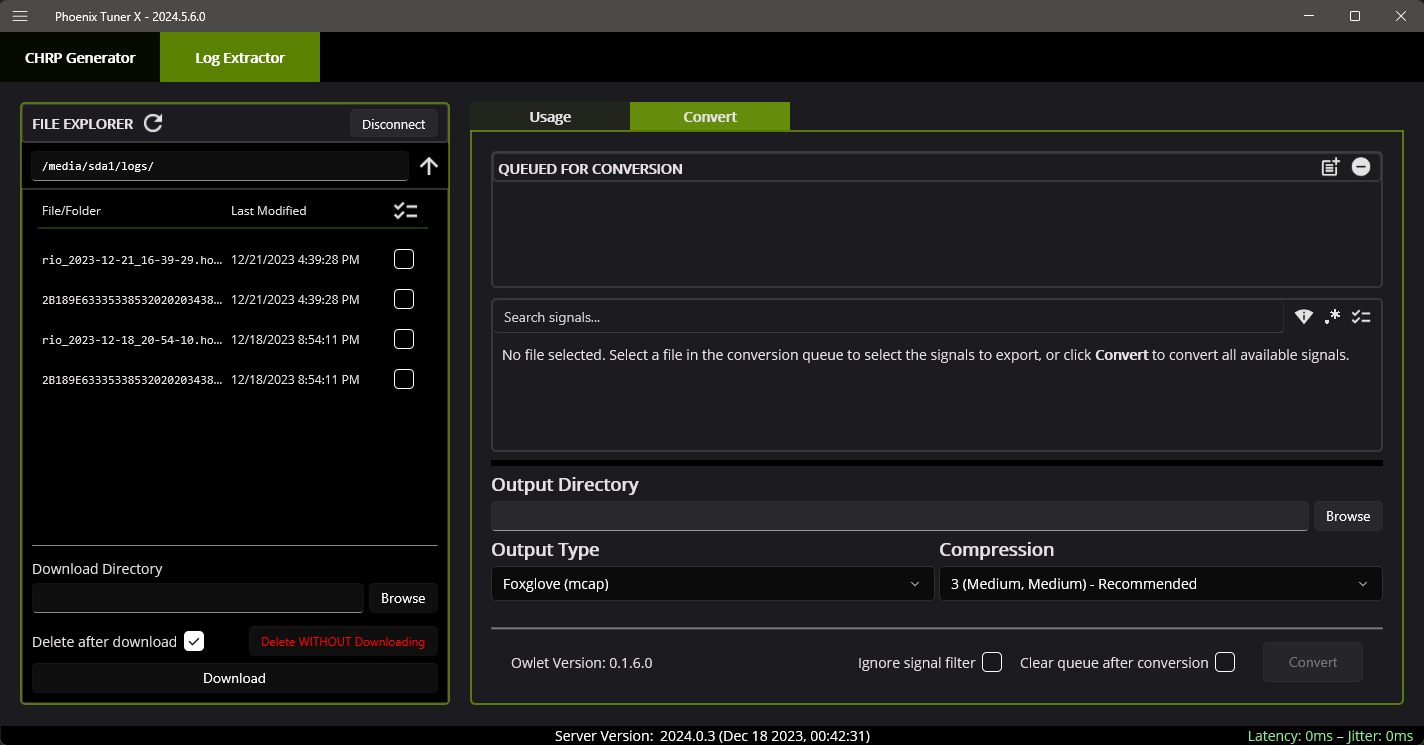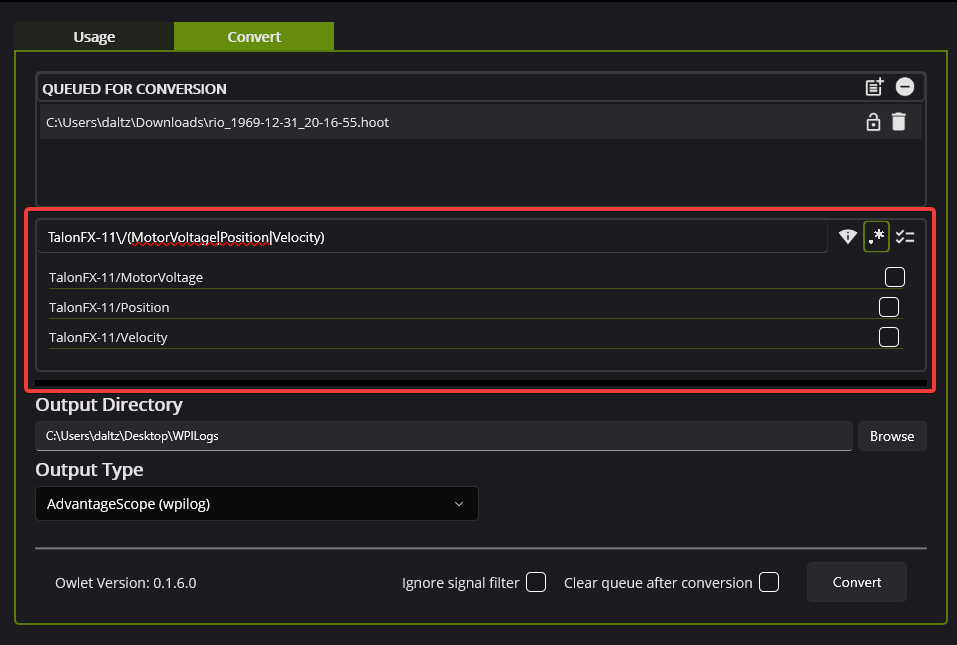Extracting Signal Logs#
Tip
Information on how to use the signal logger API can be found in the corresponding API article. Tuner offers in-app functionality to retrieve, manage, and convert hoot logs to compatible formats.

CTRE hoot logs can be retrieved utilizing the file explorer on the left of the application. The file explorer offers the functionality to download and delete logs on a remote target.
On the right side, the Convert tab can be used to import and convert hoot logs to available formats.
Once a hoot log has been downloaded, it is automatically placed in the conversion queue to the right. Logs can also be manually imported or removed using the two buttons at the top-right of the conversion queue.

If a log file is reported as unlicensed, users can perform a Deep Scan of the log if they believe it should contain pro-licensed devices. By default, Tuner will only scan the first few megabytes of the log for pro-licensed devices to save time during scan and export.
Filtering for Signals#
Since hoot logs can contain a massive amount of data, users may want to trim the exported log file. Tuner supports simple search and regex filtering of signals in a hoot. Filters are optional and configured on a per-log basis.
Note
If no signals are selected, all signals will be exported during conversion.
In the below picture, regex is used to select only the MotorVoltage, Position, and Velocity signals for TalonFX-11.

Important
If the hoot log does not contain any Pro-licensed devices, a limited set of signals may be exported for free using the AdvantageScope (wpilog) option.
Converting#
After adding hoot logs to the queue, select the output directory and one of the output types. Then, click the Convert button to begin the conversion process. This may take some time depending on the output format, the size of the hoot file, and the number of selected signals.

Common Issues#
Problem: When converting, I get hoot log API version too old, cannot export its signals#
Solution: This may happen if your hoot file was generated using an old version of Phoenix. Update your Phoenix installation (by updating your vendordep in Installing Phoenix 6) and recreate your log file. If the log file recorded is critical, reach out to support@ctr-electronics.com.
Problem: When converting, I get Could not read to end of input file#
Solution: This occurs when the converter encounters bad data. This typically occurs when the robot is turned off in the middle of writing to the log. Users can often ignore this error message, although the last few seconds of data may be lost. To avoid this issue, run SignalLogger.stop() before shutting down the robot program.